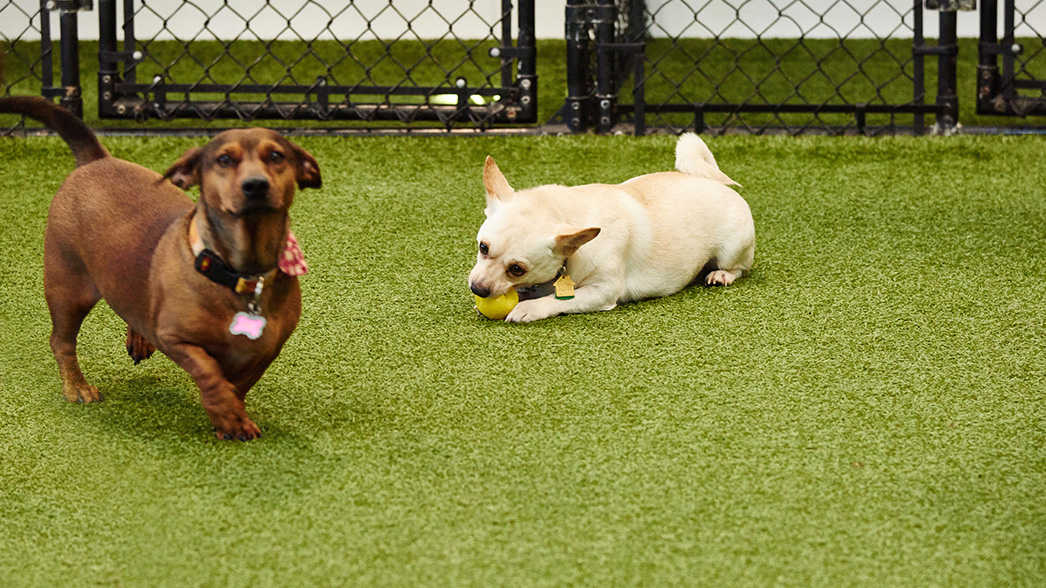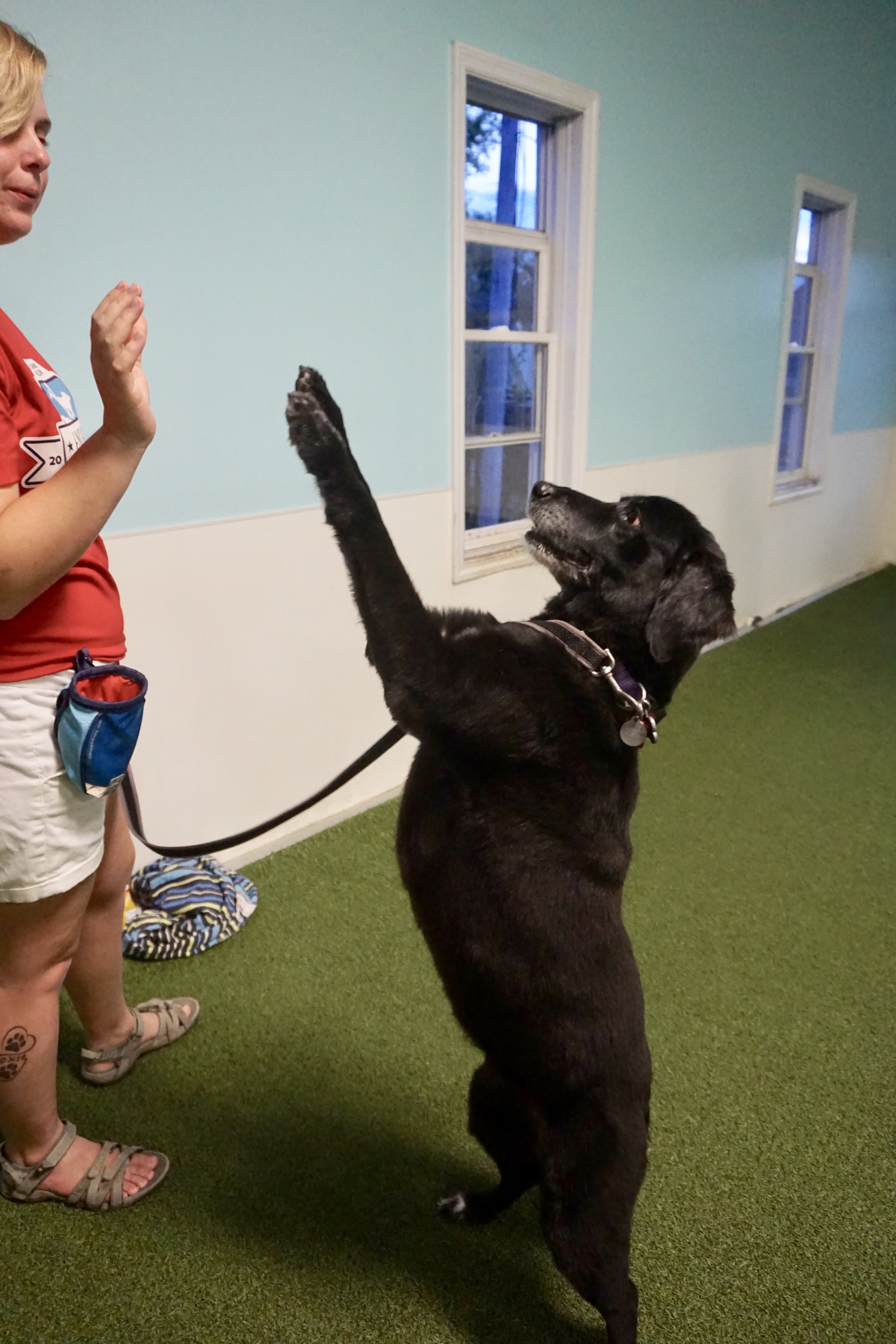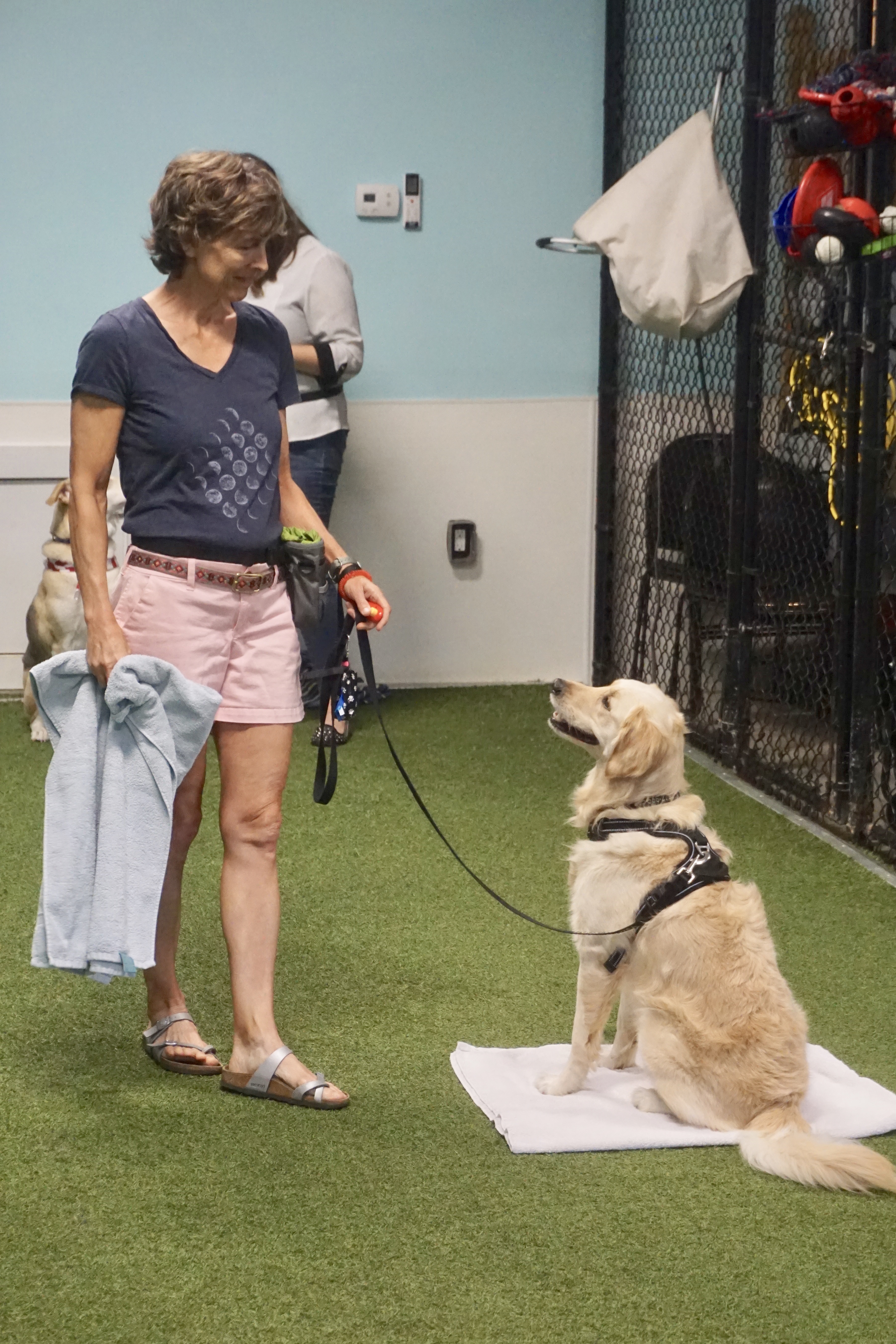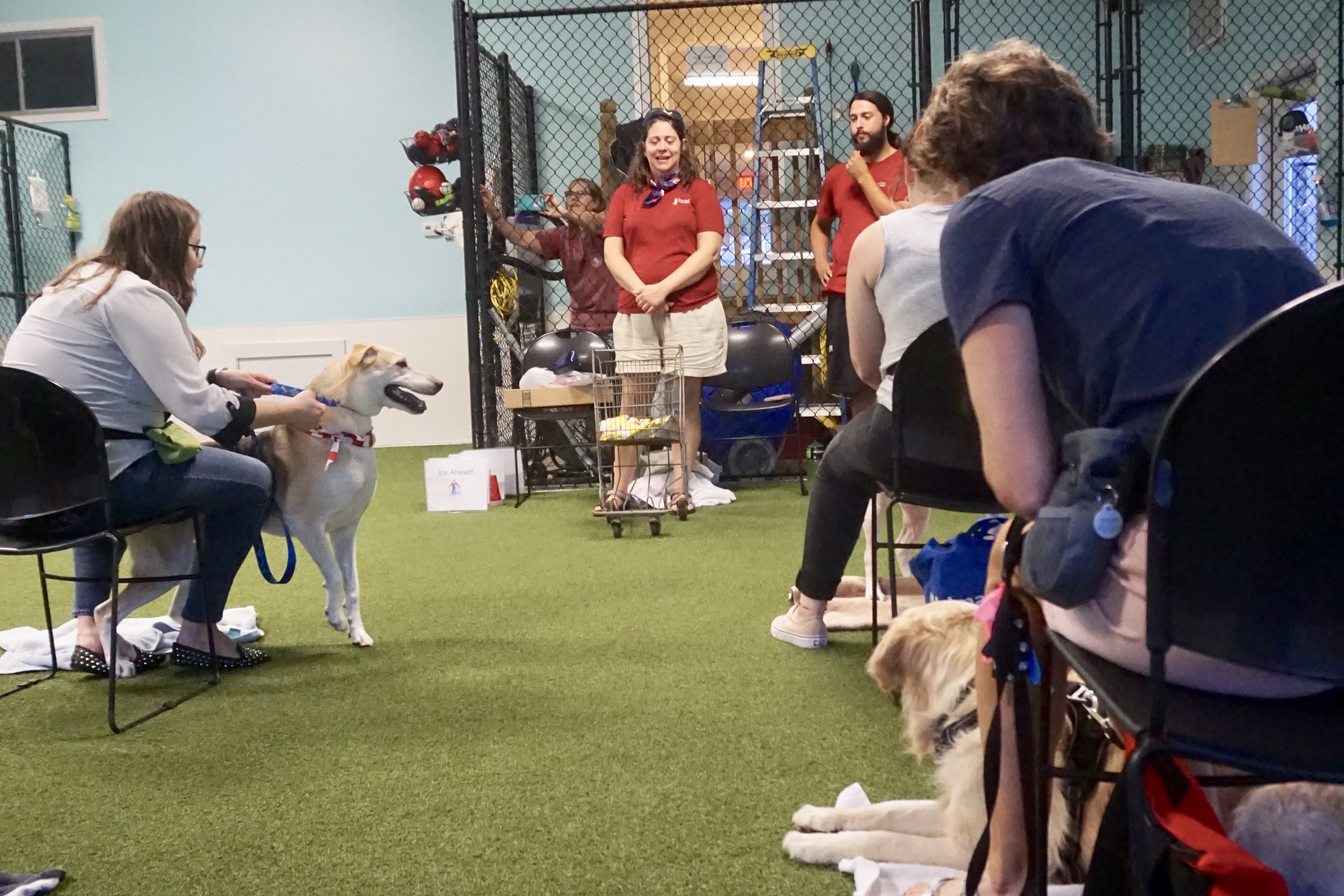
BLOG
GROUP TRAINING VS. INDIVIDUAL TRAINING
Merritt Milam | March 1, 2019
TRAINING YOUR PET: A 3-PART SERIES
PART 2: Group Training vs. Individual Training
In last month’s blog we covered the pros and cons of Positive Reward vs. Negative Discipline training programs. Once you’ve decided what type of training method is best for your pet, it’s now time to consider the differences between group training classes vs. individual or private training. Whether you have a new puppy or an older furry pet, you’ll want to make sure you understand your options, to make the best selection for you and your dog.
Individual/Private Training
The first step in deciding which class is best for your pet is to review the course curriculum. It is important to note possible age minimums or prior class requirements, to assure your goals for training are attained. It’s also critical to consider the trainer(s) and their certifications as well as experience level. If you have a dog with anxiety, fear, or aggression issues; private lessons may be helpful until your trainer is confident your dog can handle a group environment. Private lessons will provide your pet with fewer distractions, allowing them to focus on the trainer and your instructions. Sometimes new puppy parents may find a couple of private lessons to be beneficial early in the training process.
Another consideration in favor of private dog training lessons – is your time. If you can’t be in class every Tuesday night at 7:00 pm for 6 weeks – then private lessons may provide a more flexible option. Group lessons are very structured and offer a set curriculum, whereas individual training may be customized for your pet’s needs.
While the positives of individual lessons can have its advantages in your pet’s early training, there are drawbacks. At some point, your pet will benefit from the interaction and distractions of a group of their paw pals. Dogs that are only trained in private lessons may become stressed or distracted in group settings. One of the most important components they miss in private training is socialization with other dogs and people. Dogs need to have interaction with other pets and people in order to learn how to handle their actions and temperament in public.
Finally, if cost is an issue, group rates will be less than private lessons since you’re sharing the training cost with other pet parents.
Group Training
As offered earlier, Group training is a good environment for your pet to learn to focus on you as the trainer while in the presence of other pets. New puppies especially benefit from group puppy socialization classes to help establish appropriate dog behavior.
Socialization is one of the most important skills they learn while being with other dogs and people. This skill becomes essential when you are out walking your dog or people visit in your home. Learning to handle these situations correctly could mean the difference in a dog that tugs your leash, jumps or runs vs. a dog that is attentive and handles distractions with control.
Group dynamics are helpful because they allow owners to learn by watching other dogs and share their experience with the other participants. Observation also provides a good opportunity to learn from others who are working through the same exercises. Additionally, group training gives parents encouragement while stimulating them to complete homework training assignments away from the training session.
Group training may limit the individual time a trainer has to devote to each dog; however, their knowledge in group dynamics with pets will more than overcome this issue. Experienced trainers also make sure there are plenty of activities and training exercises to practice during and after the class. Some programs may include multiple trainers, allowing for additional individual time with each pet.
Which Training Is Best: Group or Individual?
Group or individual…the answer depends on your dog along with consideration of your specific circumstances. It may be that a blended version works best. Some dogs may benefit from a few private classes if they are extremely shy or fearful, then transition to group classes for the socialization and distraction training they will need for long-term success.


 Remember, dog training programs come in all shapes and sizes. From basic puppy and beginner obedience classes to advanced, impulse control, therapy prep, and tricks training…there is definitely a class for your pet. Most pet training businesses offer a series of classes designed to build on the previous class curriculum or to expand the pet’s abilities. To determine the best classes for your pet, always check out the course curriculum offered. For Wags class schedules and detailed curriculum, visit Wags training website. You can also email our professionally certified trainer Rebecca Mason at Rebecca@LoveThemTrainThem.com for more information.
Remember, dog training programs come in all shapes and sizes. From basic puppy and beginner obedience classes to advanced, impulse control, therapy prep, and tricks training…there is definitely a class for your pet. Most pet training businesses offer a series of classes designed to build on the previous class curriculum or to expand the pet’s abilities. To determine the best classes for your pet, always check out the course curriculum offered. For Wags class schedules and detailed curriculum, visit Wags training website. You can also email our professionally certified trainer Rebecca Mason at Rebecca@LoveThemTrainThem.com for more information.
At Wags we have a passion for training dogs as beneficial life-long pets and companions. We hope this information has been helpful and we encourage you to check into our family-friendly, positive feedback training programs for your best friend.
Next Month Part 3: Pros & Cons of Being Off Leash


